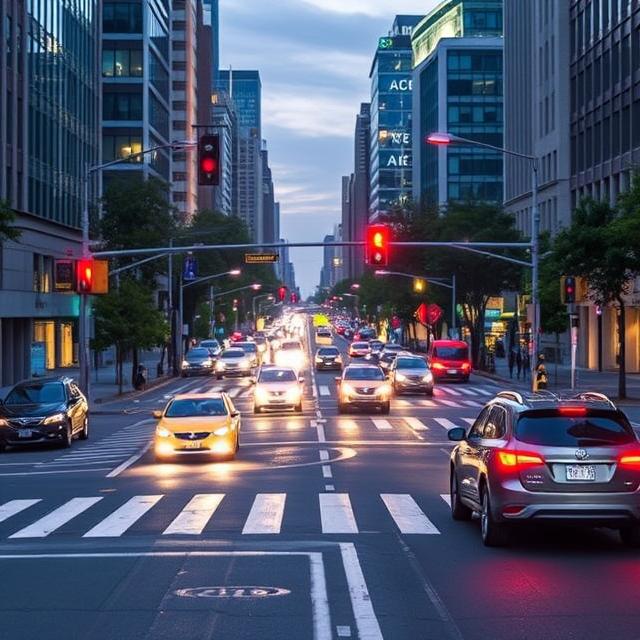Real-Time Data: The Backbone of Smarter Traffic
The increasing adoption of smart cities technology has transformed the way urban areas approach transportation challenges. At the heart of this transformation lies real-time data collection, which allows cities to monitor, predict, and respond to traffic patterns instantly. Connected traffic lights are tied to GPS-enabled public transportation as additional sources of constantly gathered data in order to feed a clearer picture of everyday urban movement.
This collected information is then analyzed to adjust signal timings, reroute traffic, and manage congestion. For instance, if a sensor detects a traffic jam in one zone, the system can automatically divert vehicles using alternative routes.. This dynamic approach to smart cities traffic management reduces delays, saves fuel, and cuts down emissions. By replacing reactive responses to predictive solutions, cities will also be able to get better solutions in managing peak-hour bottlenecks and unplanned disruptions.
AI and Machine Learning: Enhancing Traffic Flow
Artificial intelligence (AI) and machine learning are playing a growing role in optimizing smart cities traffic management. Any of these tools could analyze huge volumes of data for spotting patterns, making predictions, or even simulating some traffic scenario. Over time, the system would “learn” which areas are likely to clog at certain times and adjust accordingly – automatically and in real time.
AI is a tremendous benefit to smart cities technology with respect to improving human error. Whereas traditional traffic systems use manual observation and delayed interventions, intelligent systems are always on, always learning, and always optimizing. As such, these systems improve flow across intersections, cut the emergency response times, and create that environment where pedestrians and drivers are safer.
Connected Infrastructure and Communication Networks
Interconnected infrastructure such as smart traffic signals, road sensors, surveillance cameras, and even smart-sensing streetlights could constitute another core intellectual asset of smart cities. Such devices “communicate” with each other over high-speed networks, enabling an instant decision to be made based on live conditions.
For example, street sensors integrated into an intelligent traffic management plan can detect vehicles, adjust their signals, and inform an adjacent street that it has incoming traffic. This seamless coordination results in fewer stops and starts, smoother rides, and improved road capacity without expanding infrastructure.
Reducing Accidents and Improving Safety
Safety is a major aspect of smart cities traffic management. Data from crash reports, camera footage, and road sensors can be put together to highlight accident-prone areas of the city and solutions would be targeted toward those areas.
Pedestrian safety can also be improved within a smart city. Smart crosswalks can be equipped with motion detectors that will adjust signal timing to provide more time to cross when such time is needed. Likewise AI can uncover high-risk behaviors such as over speed or running red lights, enabling rapid punishment and prevention through fines or warnings.

How Smart Cities Technology Aids Traffic Management Plans
Public Transport Integration and Efficacy
An efficient approach to traffic management also involves the conversion of basic private vehicles into buses, trains, and any other moveable public transportation. Synchronizing traffic lights with the arrival of buses, having shorter wait times, and providing passengers with real-time updates are some of smart cities technology services offered to bus rapid transit systems. Due to this coordination, public transit becomes an explicit alternative for daily commuters.
While integrated with an overall model, these also contribute to a smart cities traffic management system that creates a balanced platform in which private and public transport exist and work together efficiently. Reduced road traffic, shorter commute times, and lower emissions are all derived from strategic arrangements such as these.
Sustainability and the Future of Urban Mobility
This latest system of smart cities technology goes ahead to enhance that aspect of environmental sustainability. Reduced idling times, optimized routes, and efficient public transport are fuel consumption and further decrease the amount of air pollution. As cities become more committed to green initiatives, this aspect of intelligent city traffic management is invaluable in getting emission targets.
Indeed, intelligent systems implanted in how everyday traffic planning occurs bring cities closer to being livable, less congested, and more environmentally responsible. City mobility in the near future becomes smart, connected, and sustainable.
Smart cities technology supports smart cities traffic management through real-time data, artificial intelligence, and connected systems for safe, fast, and green urban mobility.
How Smart Grids Software Powers Energy Distribution Terminal Blocks



